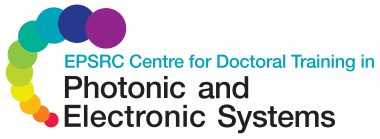News
Site News
We are delighted to congratulate Professor Steven Lee on receiving the prestigious RMS Scientific Achievement Award 2025. A global leader in single-molecule microscopy for biological discovery, Steven has played a pivotal role in the CEPS and PES CDT programmes through his collaborative research and student supervision.
We are excited to see our very own PhD student, Michael Doherty, captain this year's UCL University Challenge team, confidently leading the team to victory in their first match against SOAS with a score of 210 to 170.
Last month, Ruben Ruiz-Mateos Serrano, a recent graduate of the EPSRC Centre for Doctoral Training in Connected Electronic and Photonic Systems (CEPS CDT) at the University of Cambridge, was invited to speak at the UK House of Lords.
Congratulations to PhD student Samuel Prescott on being awarded a €500 Student Travel Grant from the Optica Foundation. The award recognises PhD students whose scientific contributions to optics and photonics are of outstanding quality and who are presenting at the CLEO®/Europe-EQEC conference in Munich.
Congratulations to MRes student, Emrecan Tarakci, for winning the award for Best Poster demonstrating use of AI at UCL's Electronic and Electrical Engineering (EEE) Festival of Research





